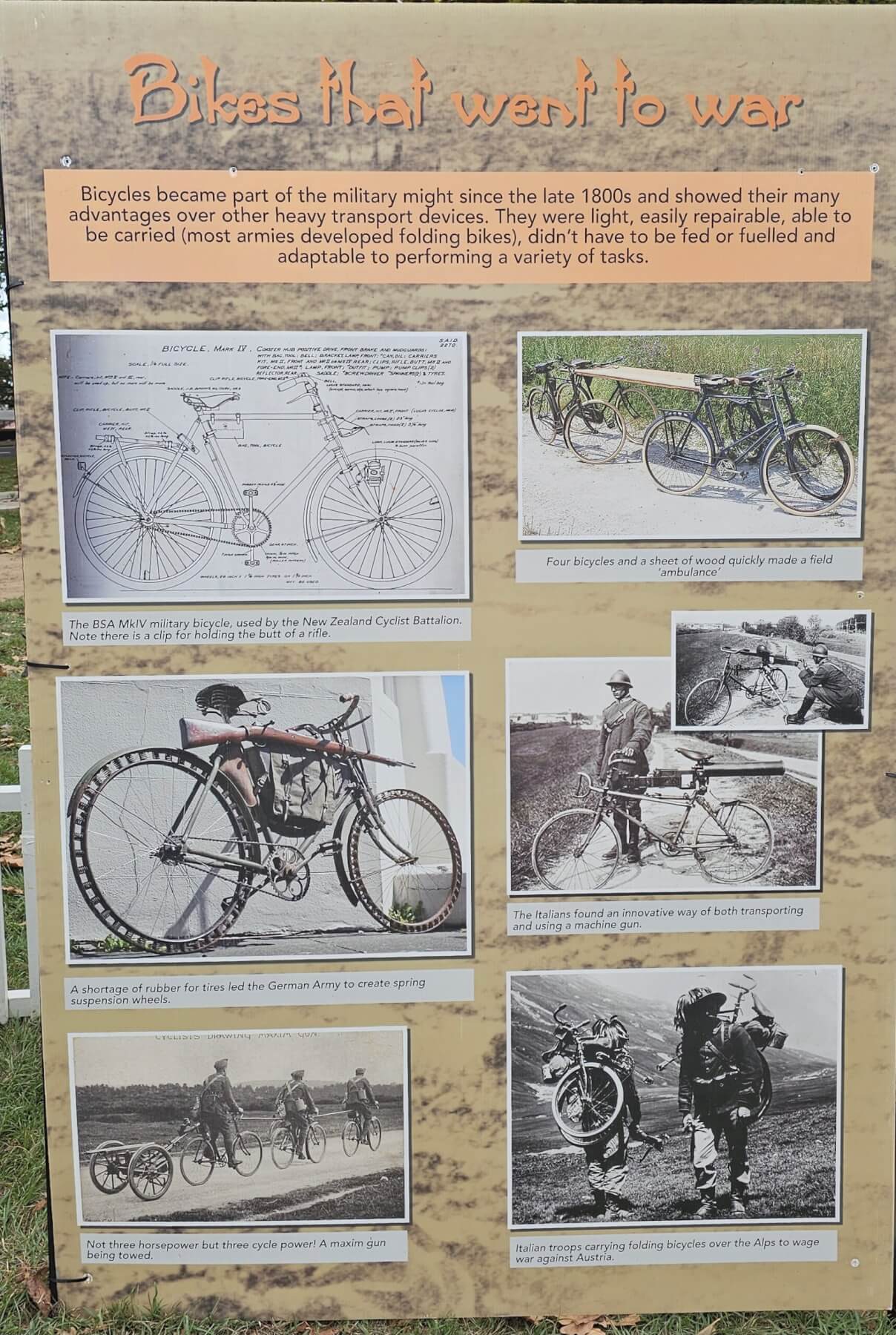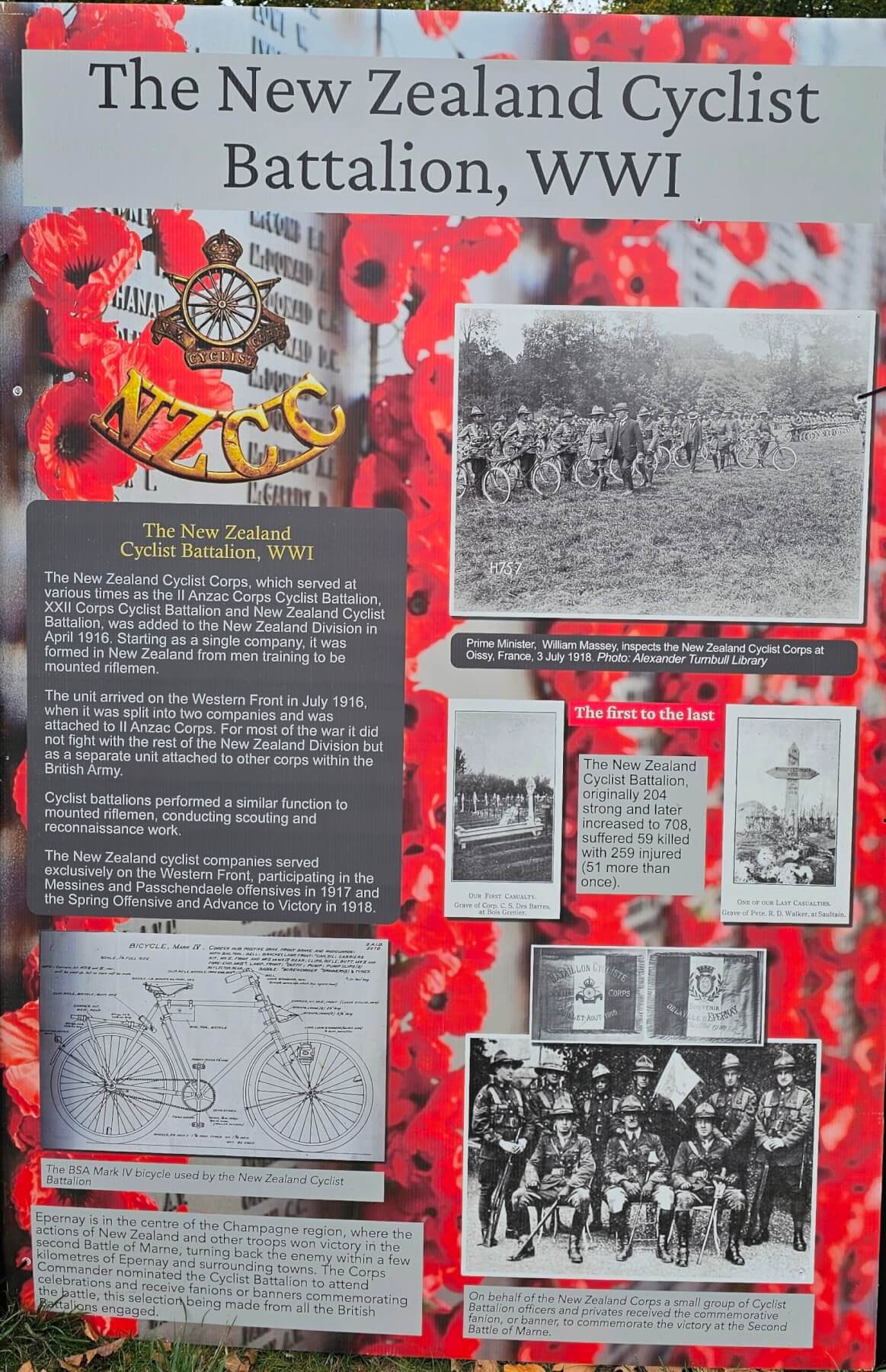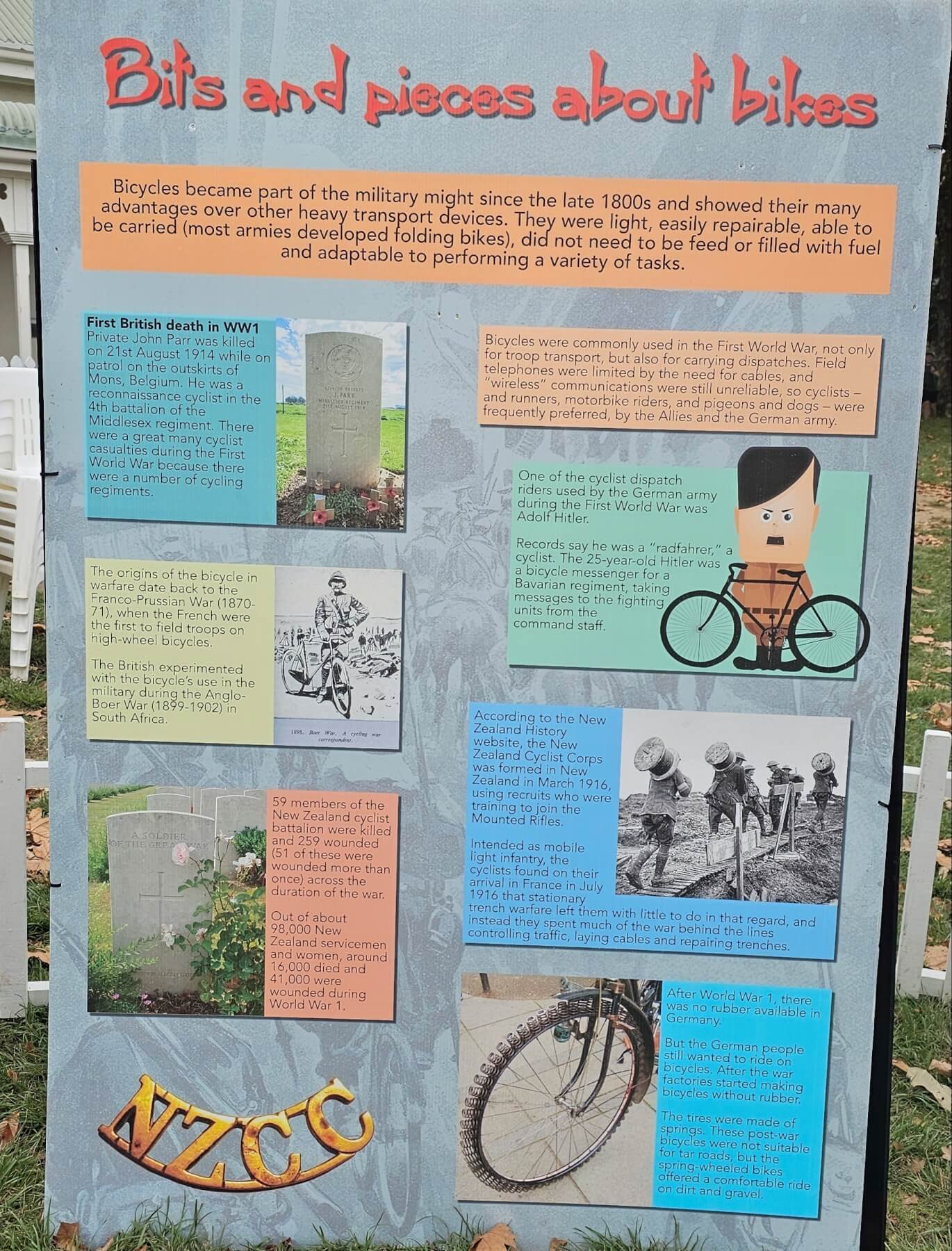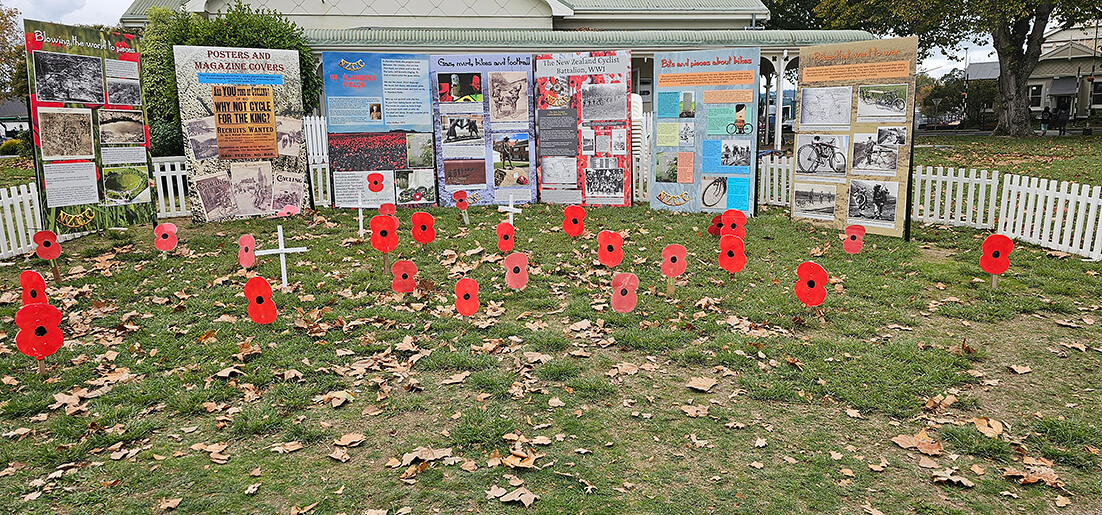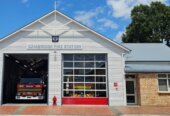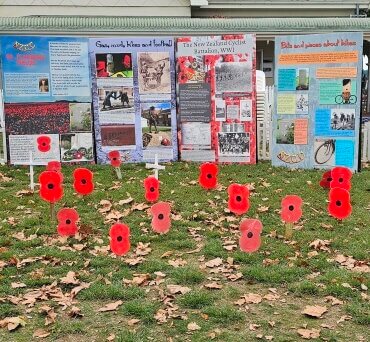
The Cambridge Cycling Festival display depicting New Zealand soldiers who fought on bicycles during World War I.
The role cyclists played in World War I was on display at the recent Cambridge Cycling Festival including the fact that Adolf Hitler was one of them.
The festival was held on Anzac Day and organisers wanted to pay tribute to an unsung group of soldiers in the New Zealand Cyclist Battalion.
It was formed in New Zealand midway through World War I from men training to be mounted riflemen.
The unit arrived on the Western Front in July 1916 but for most of the war it was attached to other corps within the British Army and participated in the Messines and Passchendaele offensives in 1917 and the spring offence and Advance to Victory in 1918.
The unit started with 204 and then increased to 708; 59 were killed and 259 injured.
Cyclist battalions performed a similar function to mounted riflemen, conducting scouting and reconnaissance work.
One of the cyclist dispatch riders used by the German army was Hitler who was a bicycle messenger for a Bavarian regiment taking messages to the fighting units from the command staff.
Bicycles had been used prior to the war because they were light, easily repairable and able to be carried. They did not have to be fed or fuelled and were easily adaptable for tasks such as a field ambulance, machine gun carrier and towing equipment.



